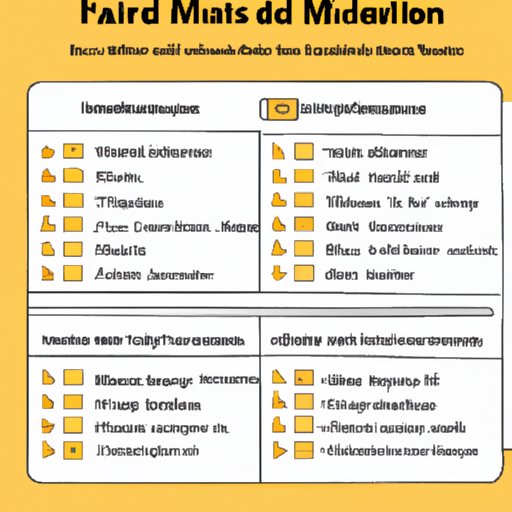
Introduction
Mixed fractions can be intimidating for those who are not familiar with them. Unlike proper fractions, mixed fractions consist of both a whole number and a fractional part. When multiplying mixed fractions, students need to convert them to improper fractions, which can be confusing and time-consuming. This article provides a step-by-step guide to multiplying mixed fractions, along with real-world examples, a video tutorial, common mistakes to avoid, an interactive quiz, and visual aids, to make the process easier and more engaging.
Step-by-Step Guide
Before diving into multiplying mixed fractions, it’s essential to understand what fractions are and how to multiply them. A fraction represents a part of a whole, and it consists of a top number, called the numerator, and a bottom number, called the denominator. To multiply fractions, you multiply the numerators and denominators together.
Mixed fractions, on the other hand, are a combination of a whole number and a proper fraction. To convert a mixed fraction to an improper fraction:
- Multiply the whole number by the denominator
- Add the result to the numerator
- Put the sum on top of the denominator
For example, to convert 2 1/4 to an improper fraction:
2 x 4 = 8
8 + 1 = 9
9/4
Now that we understand how to convert mixed fractions to improper fractions, let’s dive into how to multiply them.
Steps to Multiplying Mixed Fractions:
- Convert mixed fractions to improper fractions
- Multiply the numerators together
- Multiply the denominators together
- Simplify the result by reducing the fraction to the lowest terms
For example, let’s say we want to multiply 2 1/4 by 1 1/2. Using the steps outlined above:
2 1/4 = 9/4
1 1/2 = 3/2
9/4 x 3/2 = 27/8
27/8 is our answer, but we need to simplify it further.
The greatest common factor of 27 and 8 is 1, so we cannot simplify further. Therefore, our final answer is 27/8.
Real-World Examples
Multiplying mixed fractions can be applied to many real-life situations. For example, if you are painting a room, you need to know how much paint is required. Suppose you want to calculate how much paint is needed to paint a wall that is 5 1/2 feet high, 8 3/4 feet wide, and 1/2 feet deep. Using the formula for rectangular volume:
Volume = height x width x depth
First, let’s convert the measurements to improper fractions:
5 1/2 = 11/2
8 3/4 = 35/4
1/2 = 1/2
Next, let’s multiply the fractions:
11/2 x 35/4 x 1/2 = 192.5 cubic feet
Now, to calculate the amount of paint needed, you divide the total volume by the coverage of one gallon of paint.
Each gallon of paint covers approximately 350 square feet per coat. Therefore:
192.5 / 350 = 0.55 gallons of paint
So, approximately 0.55 gallons of paint would be required to paint the wall
Video Tutorial
If you’re a visual learner, a video tutorial can be an even more engaging way to learn how to multiply mixed fractions. Check out this video tutorial by Math Antics to learn more. It provides a clear and concise step-by-step guide and even includes examples that demonstrate how to multiply mixed fractions involving larger numbers and improper fractions.
Common Mistakes
There are a few common mistakes that people make when multiplying mixed fractions. One of the most significant mistakes is forgetting to simplify the answer. Simplifying the answer reduces the fraction to its lowest terms and makes it easier to work with. Another mistake is not converting the mixed fractions to improper fractions before multiplying them. This mistake can lead to incorrect answers.
Tips to Avoid Common Mistakes
- Always simplify the answer and convert it to the lowest terms
- Do not forget to convert mixed fractions to improper fractions before multiplying them
- Double-check the answer to ensure it makes sense in the context of the problem
Interactive Quiz
Now that you have learned how to multiply mixed fractions, test your knowledge with this interactive quiz. It will let you practice multiplying mixed fractions with various questions and provide immediate feedback, which can help reinforce the concept in your mind.
Visual Aids
Visual aids such as diagrams and infographics can help make the concept of multiplying mixed fractions easier to understand. Here’s an example of a diagram that outlines the steps to multiplying mixed fractions:

Conclusion
Multiplying mixed fractions can be challenging, but with this step-by-step guide, real-world examples, video tutorial, common mistakes to avoid, interactive quiz, and visual aids, the process should be much more manageable. Remember to practice and use the resources provided to reinforce your understanding. With perseverance, you will master how to multiply mixed fractions, and it will become second nature in no time.





